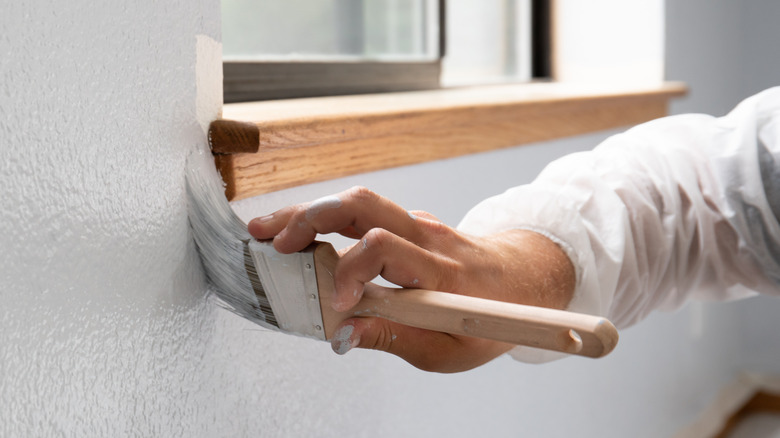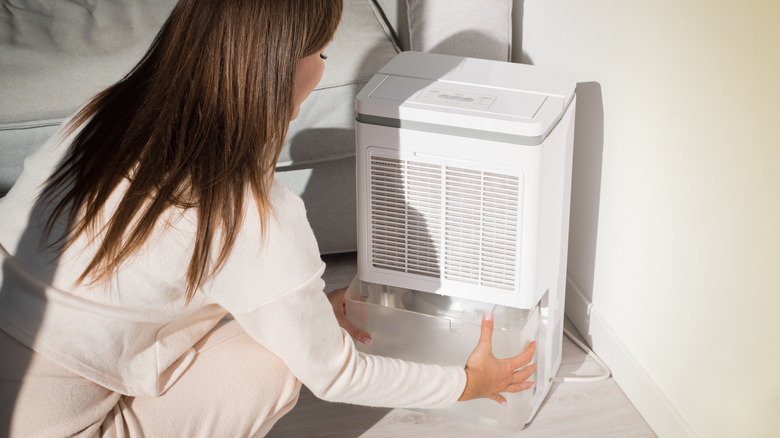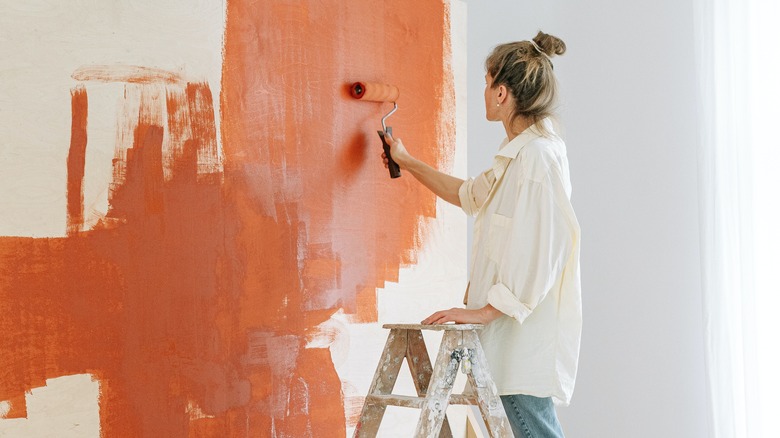Why You Should Think Twice Before Painting Your Home's Interior On A Rainy Day
A dreary, drizzling day might seem like the ideal time to work on painting inside your home. Surprisingly, though, weather conditions play a significant role in the outcome of your interior paint job. Freshly painted surfaces can be significantly affected by excess moisture. Before picking up a paintbrush, it's crucial to consider the effects of weather conditions, especially on rainy days.
Rainy or cloudy days can introduce excess moisture into the air, making it difficult for the paint to dry properly. Additionally, high humidity levels can prolong the drying time and lead to undesirable consequences. Bubbles, holes, or blisters may form on the surface, compromising the overall look of your freshly painted walls or ceilings. To prevent these issues, it's crucial to be mindful of the moisture levels in the environment during the painting process. By understanding the importance of weather conditions, particularly the impact of moisture, you can choose the best timing for your interior paint projects.
Choosing the right weather conditions
Even though you are indoors, clear skies are highly desirable for interior painting. Checking humidity levels before painting is essential, even if it's a beautiful, sunny day outside. The ideal relative humidity for painting varies depending on the type of paint being used, but a general guideline is to aim for a relative humidity level between 40% and 50%. Using a dehumidifier can help remove excess moisture from the air, providing a more favorable environment for paint drying. Additionally, strategically placed fans can aid in circulating the air and speeding up the drying process. In particularly humid conditions, typically above 85% relative humidity, it is generally advisable to hold off on painting.
Along with higher humidity, proper ventilation is another critical consideration when it comes to interior painting. Opening windows to let fresh air in might not be feasible due to rain. This can lead to trapped moisture inside the room, hindering the drying process, as well as creating potential health risks. Wind can also be a concern, as strong gusts can blow in dust or debris through cracks or gaps in doors, windows, or walls onto wet paint, causing imperfections and compromising the smooth finish.
Other weather considerations
There are a few more weather considerations to keep in mind for successful interior painting. For instance, snow can also affect the overall humidity levels inside your home. Even if you're not directly painting near windows or exterior doors, moisture from precipitation can still seep into the house and affect the drying process. The temperature in the room can also affect the drying time and the overall quality of the paint job. Extreme temperatures, whether too hot or too cold, can affect the consistency and application of the paint. It's generally recommended to paint in temperatures between 40°F and 90°F for optimal results.
The air quality in the room can also impact the paint application and drying process. Avoid painting when there are high levels of dust, pollen, or other particles in the air that could settle on wet paint and mar the smooth finish. If necessary, use air purifiers to minimize airborne contaminants during painting. Maintaining a controlled environment and ensuring favorable weather conditions will significantly contribute to achieving a professional-looking finish for your next project.


